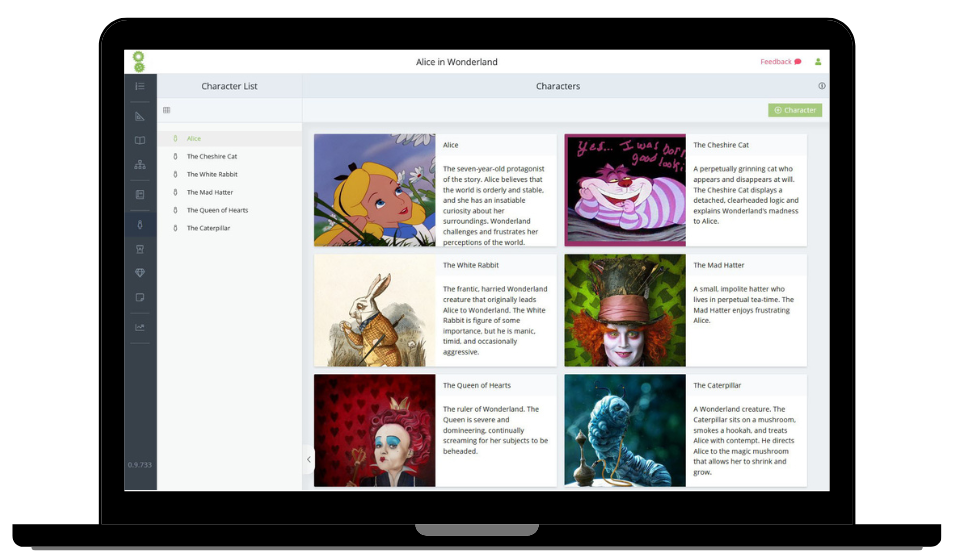
Character Empathy 101: 7 Techniques for Creating Empathetic Characters
Michael Hauge’s ‘Writing Screenplays that Sell’
The information and advice in this article are all based on ideas from Michael Hauge’s book Writing Screenplays that Sell. I highly recommend you buy that book and read it.
As well as giving more detail about each of the ideas below, it covers many other areas relating to storytelling, including structure, primary characters, and more.
7 Practical Techniques for Building Empathetic Characters
Below is a summary of the points Hauge makes in his book, listing the most effective techniques for building empathy with the characters in your story. Arguably, it’s most important for the readers to have empathy with the protagonist of the novel, but it’s a good idea to employ some of these techniques for the supporting characters too – even the nemesis.
It’s unlikely you’ll want to use all of these techniques at the same time – it’s better to be skillful in picking and choosing the most appropriate techniques for the situation. Some will be more or less appropriate for your plot, setting, and characters and some are more powerful than others, so won’t need so much support.
Have you used any of these techniques in your stories? Do you have any other techniques to add to this list? Tell us about in on our Facebook group!
1. Create sympathy
A great way to do this is by showing your character suffering from undeserved misfortune. This could be a specific ‘bad day’ kind of event, or it could be that their entire life is a struggle, even though they are trying their hardest.
2. Put the character in jeopardy
In the same vein as creating sympathy, you can try to get your readers to worry about your character by putting them in a threatening situation. This could be life-threatening as it is in action-based stories, but it could also be a risk of exposure, embarrassment, or loss of something important.
3. Make the character likable
- Show them as kind and good-hearted
Even if the character is an evil villain, if the first time we see them they are tucking their children into bed and giving them a goodnight kiss, we will probably feel the urge to like them. Showing them being a good parent, friend or altruistic stranger will build empathy.
- Show them as well-liked by others
If other people like them, then we are more likely to like them too.
- Make them funny
Readers can end up liking characters that are completely reprehensible if they make us laugh. We might not agree with their morals or behavior, but if a character has a genuine wit, we can’t help but like them, even just a little bit.
4. Make the character highly skilled
Hague says ‘We are naturally drawn to people who are talented, who are masters at what they do’. So showing a character in their element, excelling at a skill (and the skill could be absolutely anything if it’s played right, though there are obviously some skills that naturally carry more coolness clout) will help win the respect of the audience.
5. Show the character in touch with their own power
Closely related to being highly skilled, is being powerful.
- Power over other people
We are fascinated by people power who wield power over others, whether we crave it, fear it, or resent it. We may not like such people, but there is a morbid fascination, and we can’t look away.
- Power to do what needs to be done
A common quote that comes from real-life heroes is ‘Anybody would have done it’, about, say, climbing over an electric fence and confronting an enraged bull in order to rescue someone.
The rest of us aren’t so sure we would be quite so unhesitant, but we’re really glad those people are around, and experiencing them in stories can give us some sense of vicarious heroism.
- Power to express one’s feelings regardless of other’s opinions
Most of us worry a lot about the opinions of others, so it can be refreshing to read about a character who says it like it is, and because it’s fiction, probably get away with it, too.
- Superpowers
Many of us dream of making the world a better place, but we feel powerless. Superhero characters usually start out as everyday Janes like the rest of us, but then transform into someone with special skills. We like to imagine that if we had such good fortune, we too would give up being petty and self-centered, and would dedicate ourselves to high moral goals.
6. Place the character in a familiar setting
If appropriate for your story, then seeing a character in a familiar and relatable setting will establish some level of empathy right away. For example, if a harried young father sees a harried young father at home juggling three kids, a boiling pot of water, and a dog barking at the postman – he’s likely to feel a surge of empathy. Similarly, if a bored office worker sees a character who is based in a similarly depressing cubicle surrounded by the same water coolers and plastic pot plants, they will immediately identify. This isn’t to say that you should aim to locate your story somewhere like this if that’s not the appropriate place for it, only that a lot of the empathy-building will come for free.
7. Give the character flaws and foibles
‘If your character walks into walls like we all do from time to time, then identification increases’, says Hauge. We’ve all felt socially awkward or out of our depth in certain situations, so we feel empathy when we see others suffering as we all too painfully remember.
Please share and comment!
If you’ve found this article useful, then please share it with other writers. And if you have any comments, feedback or suggestions, please leave them below!
Do you use any of these techniques? Can you add any more techniques that we haven’t listed here?
Further reading:
Unlock your writing potential
If you liked this article by the Novel Factory, then why not try the Novel Factory app for writers?
It includes:
- Plot Templates
- Character Questionnaires
- Writing Guides
- Drag & Drop Plotting Tools
- World Building resources
- Much, much more

